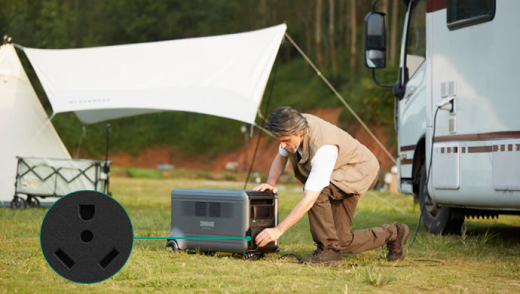 Solar Generators: The Future of Clean Energy As the world becomes more environmentally conscious, the demand for clean energy sources is on the rise. Solar generators are one such source that has gained popularity in recent years. In this article, we will explore the basics of solar generators and how they work. What is a Solar Generator? A solar generator is a device that converts solar energy into electrical energy. It consists of three main components: solar panels, a battery, and an inverter. The solar panels capture the sun's energy and convert it into direct current (DC) electricity. The battery stores the electricity, and the inverter converts the DC electricity into alternating current (AC) electricity, which can be used to power appliances and devices. How Does a Solar Generator Work? Solar generators work by harnessing the power of the sun. The solar panels are made up of photovoltaic cells, which convert sunlight into electricity. When sunlight hits the cells, it creates an electric field that causes electrons to flow. This flow of electrons creates a direct current (DC) of electricity. The DC electricity is then stored in the battery. The battery acts as a reservoir, storing the electricity until it is needed. When electricity is required, the inverter converts the DC electricity into AC electricity, which can be used to power appliances and devices. Advantages of Solar Generators Solar generators have several advantages over traditional generators. Firstly, they are a clean and renewable source of energy, which means they do not produce harmful emissions or contribute to climate change. Secondly, they are quiet and require little maintenance, making them ideal for use in residential areas. Finally, they are portable and can be used in remote locations where traditional power sources are not available. Applications of Solar Generators Solar generators have a wide range of applications. They can be used to power homes, RVs, boats, and other vehicles. They are also used in disaster relief efforts, providing power to areas that have been affected by natural disasters. Additionally, they are used in outdoor activities such as camping and hiking, providing a reliable source of power in remote locations. Conclusion Solar generators are a clean, renewable, and versatile source of energy. They work by harnessing the power of the sun and converting it into electrical energy. They have several advantages over traditional generators and can be used in a wide range of applications. As the world continues to move towards clean energy sources, solar generators are likely to play an increasingly important role. Related Websites: 1. Solar Energy Industries Association: https://www.seia.org/ 2. National Renewable Energy Laboratory: https://www.nrel.gov/ 3. Solar Power World: https://www.solarpowerworldonline.com/If this is interesting to you, why not solar generators.
Solar Generators: The Future of Clean Energy As the world becomes more environmentally conscious, the demand for clean energy sources is on the rise. Solar generators are one such source that has gained popularity in recent years. In this article, we will explore the basics of solar generators and how they work. What is a Solar Generator? A solar generator is a device that converts solar energy into electrical energy. It consists of three main components: solar panels, a battery, and an inverter. The solar panels capture the sun's energy and convert it into direct current (DC) electricity. The battery stores the electricity, and the inverter converts the DC electricity into alternating current (AC) electricity, which can be used to power appliances and devices. How Does a Solar Generator Work? Solar generators work by harnessing the power of the sun. The solar panels are made up of photovoltaic cells, which convert sunlight into electricity. When sunlight hits the cells, it creates an electric field that causes electrons to flow. This flow of electrons creates a direct current (DC) of electricity. The DC electricity is then stored in the battery. The battery acts as a reservoir, storing the electricity until it is needed. When electricity is required, the inverter converts the DC electricity into AC electricity, which can be used to power appliances and devices. Advantages of Solar Generators Solar generators have several advantages over traditional generators. Firstly, they are a clean and renewable source of energy, which means they do not produce harmful emissions or contribute to climate change. Secondly, they are quiet and require little maintenance, making them ideal for use in residential areas. Finally, they are portable and can be used in remote locations where traditional power sources are not available. Applications of Solar Generators Solar generators have a wide range of applications. They can be used to power homes, RVs, boats, and other vehicles. They are also used in disaster relief efforts, providing power to areas that have been affected by natural disasters. Additionally, they are used in outdoor activities such as camping and hiking, providing a reliable source of power in remote locations. Conclusion Solar generators are a clean, renewable, and versatile source of energy. They work by harnessing the power of the sun and converting it into electrical energy. They have several advantages over traditional generators and can be used in a wide range of applications. As the world continues to move towards clean energy sources, solar generators are likely to play an increasingly important role. Related Websites: 1. Solar Energy Industries Association: https://www.seia.org/ 2. National Renewable Energy Laboratory: https://www.nrel.gov/ 3. Solar Power World: https://www.solarpowerworldonline.com/If this is interesting to you, why not solar generators.